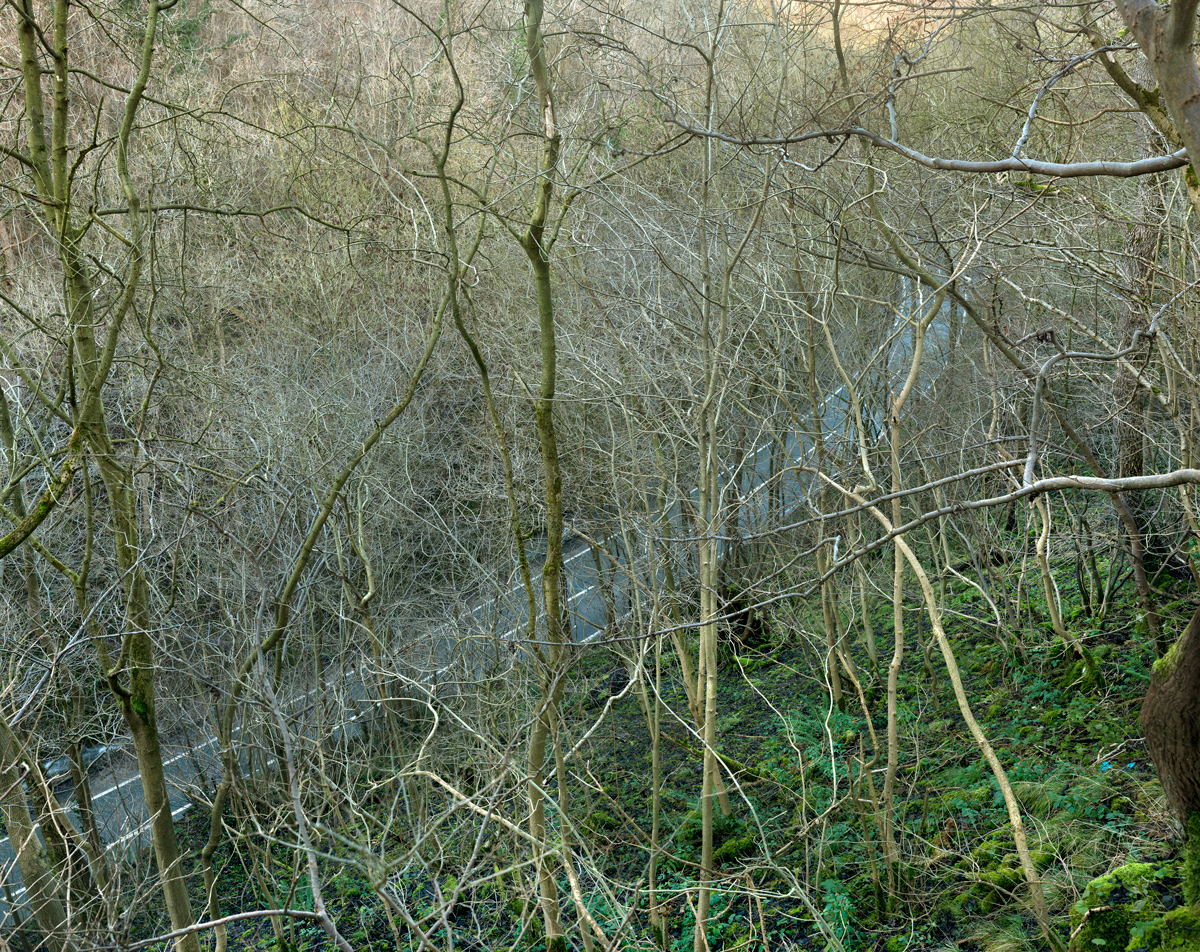Portfolio Details
Via Gellia
Via Gellia is a limestone valley in the Peak District in Derbyshire, England. It is named after Phillip Eyre Gell, who built the road running the valleys' course in 1790. As Gell claimed Roman descent the naming was latinised. The road (now the A5012) connected all of Gell's lead mines around Wirksworth to the new smelter at Cromford, but the route may have been used as early as 1720 for transporting stone from the Gell's quarries at Hopton. The valley is believed to have been mined before Roman times.
Today, the road has developed a reputation as being dangerous with a disproportionately high casualty rate, due to its narrowness, heavy goods use and its canopy of overhanging trees resulting in a persistently damp surface.
Quarry
Matthew Conduit was commissioned in 2011 by the Wirksworth Arts Festival in Derbyshire, England, under the ‘Situation Critical’ programme. He responded by concentrating on the huge quarries that directly border the town and have so fundamentally shaped its history and topography over centuries. The resulting large scale images depict in detail the huge quarry faces that almost 'map' this history.
Matthew Conduit would like to thank Tarmac and ASAP Digital for their support and assistance in producing this work.
The Wirksworth Festival: www.wirksworthfestival.co.uk
Woodland
This work was developed on an ongoing basis from 2004 to 2011. Wood Land Portfolio #1 represents the early explorations up to late 2008, including work made in Derbyshire, particularly Lathkill Dale. Wood Land Portfolio #2 represents an eventual return to the 'edgelands' of the city, and forms the basis of the 'Chora' exhibition.
The production of this work up to early 2011 was supported by the National Lottery through Arts Council England.
The publication 'Chora' is made up of a sequence developed from Portfolios #1 and #2.
Lithica
Pedreres de s'Hostal, Ciutadella, Menorca, Spain.
Lithica is a non-profit making cultural association whose objectives are the restoration, rehabilitation and transformation of the sandstone quarries at Pedrreres de s'Hostal, Menorca.
The sandstone is a permeable stone of diverse strength and coloured cream white to golden ochre, and is found all over the southern part of the island. It was used by neolithic man to construct megalithic monuments. Since around 200 years ago, man has cut huge, inter-connected 'gallery' spaces under the landscape in this location, extracting stone for building.
Matthew visited to make pictures in 2006 and 2009.
Industrial Valley
Work produced between 1984 and 1987 exploring the key industrial valley of Sheffield, the Upper Don Valley and the Lower Don Valley, at a time of huge post industrial and social upheaval. This work was exhibited at the Mappin Art Gallery, Sheffield in 1987 (curated by Mike Tooby) and Axiom Centre For The Arts, Cheltenham in 1988.
Examples from the series was most recently featured in the exhibition ‘The Sheffield Project’, at Weston Park Museum, Sheffield in 2020/21, and in the accompanying publication ‘Regeneration - The Sheffield Project’, both curated, edited and published by Matthew Conduit / Untitled print Studio.
All negatives scanned and re-worked in 2016-2020.
Groundwork
Groundwork #1 was originally produced between 1982 and 1985, and initially exhibited at Impressions Gallery, York and Axiom Centre For The Arts in Cheltenham. Some of the work also featured in Image and Exploration, Directions In British Photography 1980-85 at the Photographers Gallery, London, and subsequent East European British Council tour. The work also featured in Disturbed Ground, a group show with Keith Arnatt, John Davies and Paul Hill, at the Collins Gallery, Glasgow.
Groundwork #2 was an extension of this work, produced between 1988 and 1990.
All original negatives scanned and re-worked in 2016-21, expanding the portfolio with new, previously unused images.





